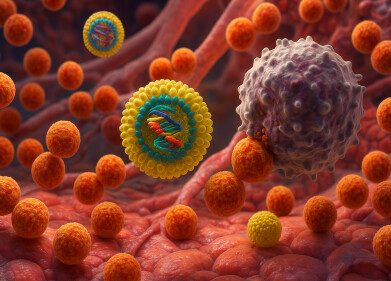-
.jpg) Dr Talat Nasim
Dr Talat Nasim
News
Diagnostic Clues Found for PAH
Mar 25 2019
Researchers at the University of Bradford have identified a biomarker that could be used to provide earlier diagnosis for Pulmonary arterial hypertension (PAH), a life limiting condition affecting around 6,500 people in the UK. Caused by a narrowing of the arteries supplying blood to the lungs and leading to possible heart failure, PAH can occur spontaneously at any age.
Led by Dr Talat Nasim, in Bradford’s School of Pharmacy and Medical Sciences and including researchers from the University of Cambridge (UK), Kings College London (UK), University of Dhaka (Bangladesh), Centre for Health Agricultural and Socio-economic Advancements (CHASA, Bangladesh) and Hacettepe University (Turkey), the study* builds on earlier research to investigate the genetic causes of PAH – in particular the mechanism of one faulty gene known as BMPR-II, which was first identified nearly two decades ago.
Dr Nasim explained: “We wanted to find out why the cells are not dying, but instead were building up inside the wall of the pulmonary arteries. To do this, we needed to identify and investigate the proteins that are influenced by this gene.”
The team discovered that the faulty BMPR-II gene affected one particular protein called Bcl-x. This, in turn, is responsible for making two different proteins, one of which increases cell apoptosis and the other one reduces it. These two work in balance in the body to regulate cell death. If BMPR-II is faulty, however, the protein for reducing cell apoptosis is increased – preventing cell death from occurring. “This protein can be used as a biomarker for accurately identifying PAH in patients,” said Dr Nasim. “This could help us diagnose PAH at an earlier stage, possibly leading to better treatment options for patients. We can also make other services available, such as genetic counselling, to help patients understand the disease and to identify those at risk of developing it.”
Dr Nasim’s team has filed a patent for the biomarker and is now investigating whether it could also be a target for new drugs. A number of promising compounds are currently being developed and tested.
*Published in Human Molecular Genetics
Digital Edition
Lab Asia Dec 2025
December 2025
Chromatography Articles- Cutting-edge sample preparation tools help laboratories to stay ahead of the curveMass Spectrometry & Spectroscopy Articles- Unlocking the complexity of metabolomics: Pushi...
View all digital editions
Events
Jan 21 2026 Tokyo, Japan
Jan 28 2026 Tokyo, Japan
Jan 29 2026 New Delhi, India
Feb 07 2026 Boston, MA, USA
Asia Pharma Expo/Asia Lab Expo
Feb 12 2026 Dhaka, Bangladesh


















